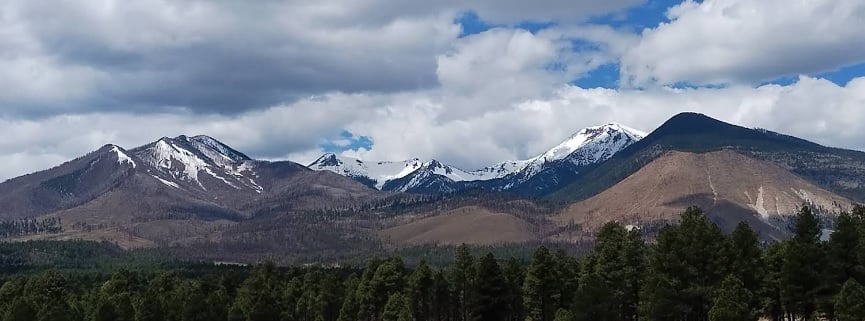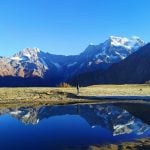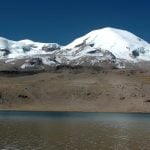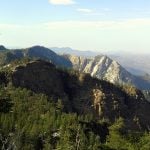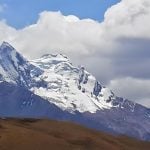Mount San Francisco: A Volcanic Peak in Argentina’s
Mount San Francisco, towering at 6,020 meters in the Andes mountain range, is one of Argentina’s most striking volcanic peaks. Located in the central Andes, near the Paso de San Francisco, a high-altitude pass between Argentina and Chile, this peak presents both an exciting technical challenge and an awe-inspiring landscape for adventure travelers. Mount San Francisco: A Volcanic Peak in Argentina’s
Geographical and Geological Features
Mount San Francisco is an extinct stratovolcano, featuring a symmetrical, steep-sided cone typical of volcanic mountains. The climb requires navigating through rocky terrain and volcanic ash, with some technical rock scrambling near the summit. While not as challenging as some other high-altitude peaks in Argentina, San Francisco presents specific geological features, including lava flows and volcanic rock, making it a fascinating destination for those interested in earth sciences. The mountain is positioned within a region characterized by barren landscapes, high winds, and limited vegetation, contributing to its isolated yet striking appearance.
Climbing San Francisco: Technical Details
The standard route for climbing Mount San Francisco starts from the Paso de San Francisco, which is accessible by road, although the route to the summit remains a multi-day trek through volcanic terrain. Climbers must ascend via steep volcanic slopes and rocky outcrops, requiring solid glacier navigation and crevasse-crossing skills. Despite its challenging terrain, the route is not considered technically difficult compared to other peaks in the region. However, its high altitude and thin air demand proper acclimatization to prevent altitude sickness.
The summit offers breathtaking views of the surrounding andes mountain range and Chilean volcanoes, making it a rewarding climb for mountaineers. Climbers also face the risk of unpredictable weather, including snowstorms and strong winds, so proper clothing and gear are essential for a safe ascent.
Best Time to Visit and Travel Considerations
The best time to attempt climbing Mount San Francisco is during the Southern Hemisphere summer months, from November to March, when the weather conditions are relatively stable. However, climbers should be prepared for harsh conditions, including rapidly changing weather at high altitudes. The region is remote, and travelers need to plan for self-sufficiency, as there are no permanent facilities along the route.
Visitors looking to experience Mount San Francisco can also explore nearby attractions, including the Paso de San Francisco and San Francisco Glacier. Travel to the region is best done through Fiambalá, a small town in Argentina, which serves as a gateway for those embarking on the trek to the peak.
Conclusion
Mount San Francisco offers a unique blend of technical climbing and volcanic beauty, making it a must-visit destination for mountaineers and adventure travelers. While not as technically demanding as other peaks in the Andes, it still presents a challenging ascent that rewards climbers with incredible views and the experience of high-altitude volcanic landscapes. Whether you’re a seasoned mountaineer or a travel enthusiast seeking new adventures, Mount San Francisco is an unforgettable experience.
Where is Mount San Francisco located?
Mount San Francisco is located in the Andes mountain range, specifically in the central Andes of Argentina. It is near the Paso de San Francisco, a high-altitude pass between Argentina and Chile.
What is the elevation of Mount San Francisco?
Mount San Francisco stands at an elevation of 6,020 meters (19,749 feet), making it one of the significant volcanic peaks in the region.
Is Mount San Francisco an active volcano?
No, Mount San Francisco is an extinct volcano. It is a stratovolcano, meaning it has a conical shape created by layers of lava and volcanic ash.
What is the standard route to climb Mount San Francisco?
The standard route involves reaching the base from the Paso de San Francisco, which is accessible by road. Climbers then undertake a multi-day trek through volcanic terrain and rocky slopes, requiring basic mountaineering skills.
What technical skills are required to climb Mount San Francisco?
Climbers must have basic mountaineering skills, including rock climbing, glacier navigation, and knowledge of high-altitude trekking. However, it is not considered highly technical compared to other peaks in the Andes.
What is the best time to climb Mount San Francisco?
The best time to attempt a climb is between November and March, which corresponds to the Southern Hemisphere’s summer months. This period offers the best weather conditions, though climbers must still be prepared for sudden storms or temperature drops.
How long does it take to summit Mount San Francisco?
Climbing Mount San Francisco typically takes 4-6 days. The first days are spent trekking to the base camp, with the final summit attempt taking place on the last day after proper acclimatization.
What is the altitude sickness risk when climbing Mount San Francisco?
Due to its elevation of 6,020 meters, altitude sickness is a real concern. Acclimatization is crucial, and climbers should spend several days at progressively higher altitudes to avoid serious health issues like HAPE (High Altitude Pulmonary Edema) or HACE (High Altitude Cerebral Edema).
Are there any accommodations near Mount San Francisco?
There are no accommodations at high altitudes near the peak. However, Fiambalá, a town in Argentina, serves as the main entry point to the area and provides basic accommodations. Camping at base camps is necessary during the ascent.
What are the environmental challenges of climbing Mount San Francisco?
Climbers must face harsh winds, low temperatures, and the high-altitude environment. The terrain is rugged and can be unpredictable, with volcanic rocks and loose surfaces posing additional risks.
Argentina’s Top 10 Highest Mountains: Peaks of South America
History of the San Francisco Peaks

